News
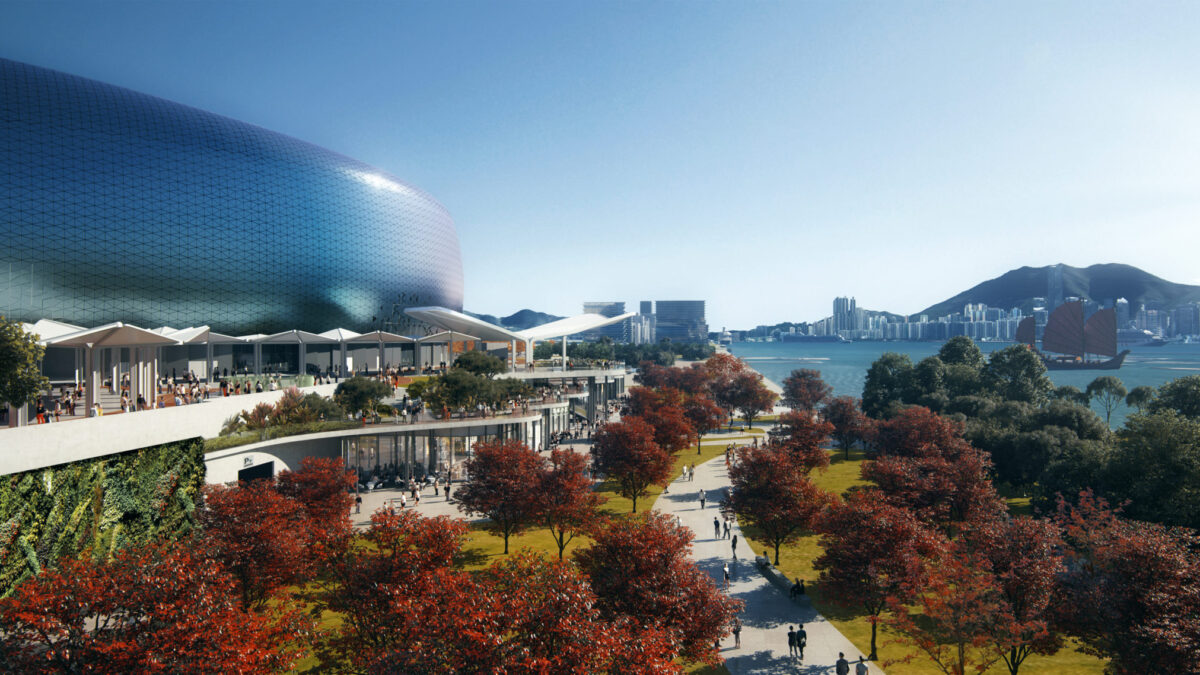
April 23, 2019
September 10, 2021
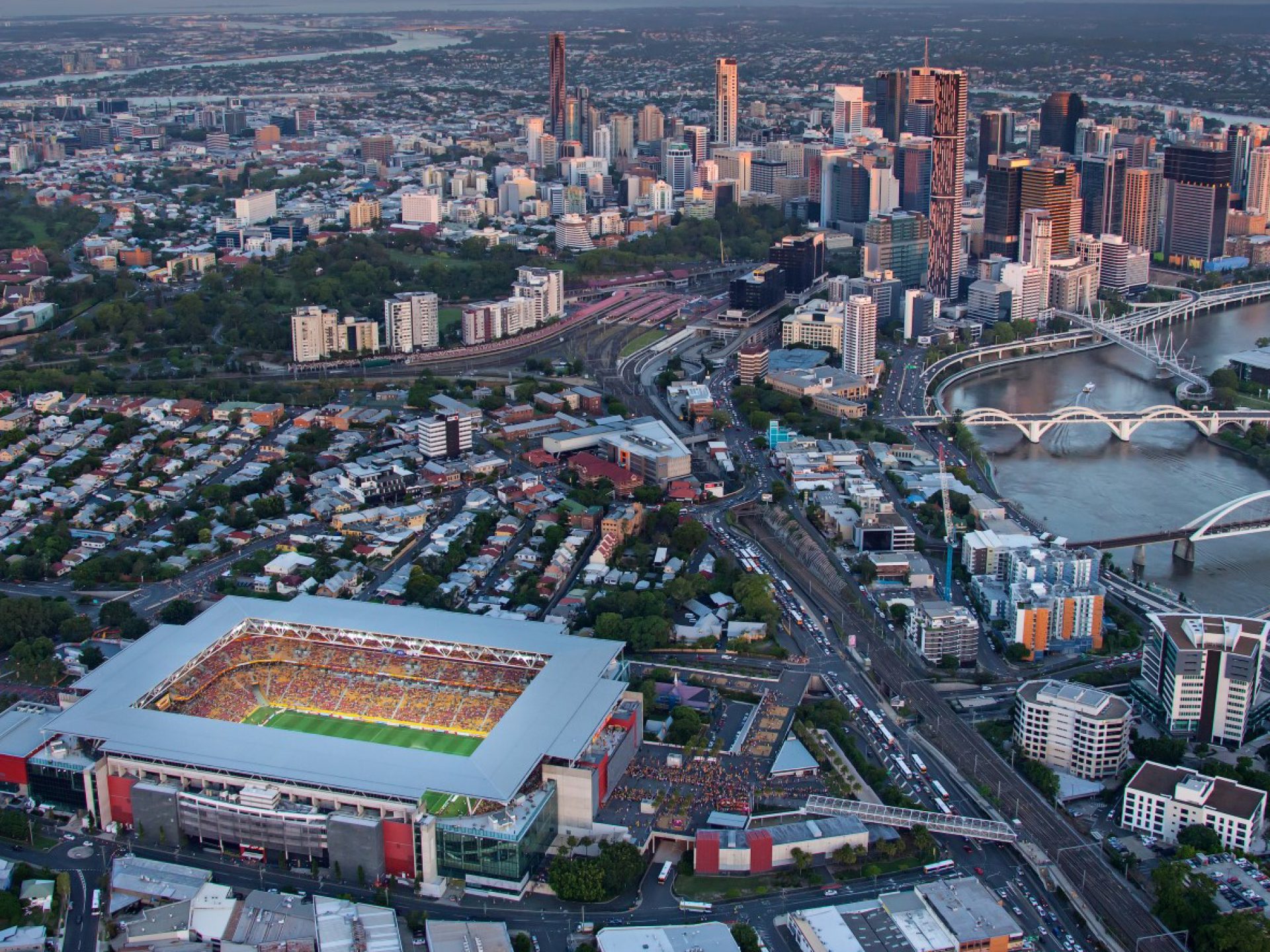
As much as major venues and events are about entertainment, they’re also about facilitating a lasting connection between people and place.
With 30+ years’ of design expertise behind them, Brisbane-based global architecture firm Populous has continued to develop and refine how large pieces of public infrastructure, like stadia and arenas, can help a city with its placemaking.
Populous Managing Director, Paul Henry said placemaking is about creating active precincts and hosting memorable events that connect local communities and visitors alike.
“Our buildings have an emotional response unlike any other building type.
“By their very nature, sports and entertainment venues need to bring thousands (or hundreds of thousands) of people together.
“It’s an incredibly sophisticated and detailed piece of work,” Henry said.
Large pieces of civic infrastructure connect people with a place which needs to be equally welcoming and functional during major events for hundreds of thousands of patrons and the local community throughout the year.
“Our design considers the full journey for a fan, patron or conference attendee; how they arrive, where they spend time before during and after the event; what happens on non-event days.
“Part of Populous’ core effort about designing extraordinary sports and entertainment precincts is how to amplify that atmosphere,” Henry said.
Connecting an energy centre
The design of a stadium has transitioned from its traditional single-use facility through to multi-purpose precincts that consider legacy and the pillars of sustainability right from the outset.
Populous Senior Principal, Chris Paterson, said designing a stadium or arena can’t be considered in isolation.
“The more you can weave a project into the fabric of a city, the more treasured it is by the people, the more used it gets and the more sustainable it becomes.
“These buildings are not just objects on their own, they’re part of the broader urban design.
“Every liveable city has a mix of social infrastructure, hospitals, schools, public transport,” Paterson explains.
Drawing together urban generation and regeneration is the Populous-designed Kai Tak Sports Park in Hong Kong, scheduled for completion in 2023.
The masterplan will see the 28-hectare site develop into an urban oasis which integrates high-quality sports venues with retail, wellness, recreational and community spaces to create a new urban centre for people living and visiting this core part of the city.
This existing cityscape makes urban connections critical to the success of the precinct. The Sports Park will be easily accessible from the adjacent Station Square and two public transport interchanges. It will be a 10-minute walk from the newly opened Kai Tak and Sung Wong Toi MTR stations and within walking distance of the Kowloon City Ferry Pier with pedestrian walkways connecting the Sports Park to new developments nearby.
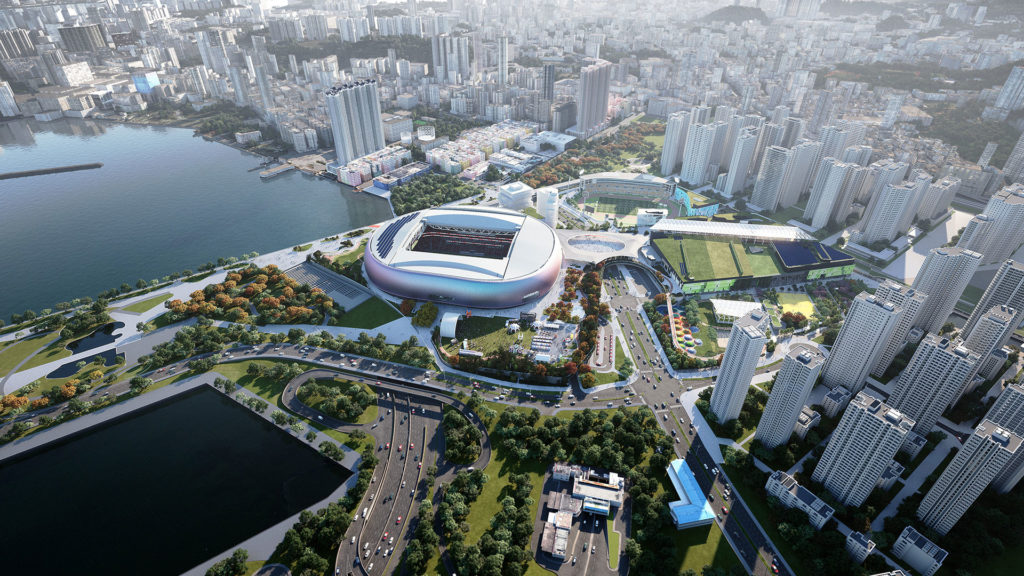
Paul Henry considers Kai Tak a great example of urban design on a grand scale.
“From passive play to recreation, to appreciation of nature, to wellness, to elite athletes, to entertainment, to an understanding of the beautiful setting by the harbour.
“It’s 30 years of design innovation wrapped up in a thriving integrated precinct,” Henry said.
Positive sustainability
The evolution of sports architecture has harnessed the shifting expectations of the community and operators around stadium sustainability, including social, economic and environmental outcomes.
Chris Paterson said the economic sustainability of Bankwest Stadium in Sydney’s west is very high and has been achieved by its diversified design and facilities which create a welcoming and engaging environment where people want to spend time and return again and again.
“We designed the rectangular stadium to accommodate three national codes of football and an entertainment precinct for live performances including an event overlay for music festivals surrounding the stadium. It also serves as the regions premier conferencing facilities and a community event space for a variety of activities,” Paterson said.
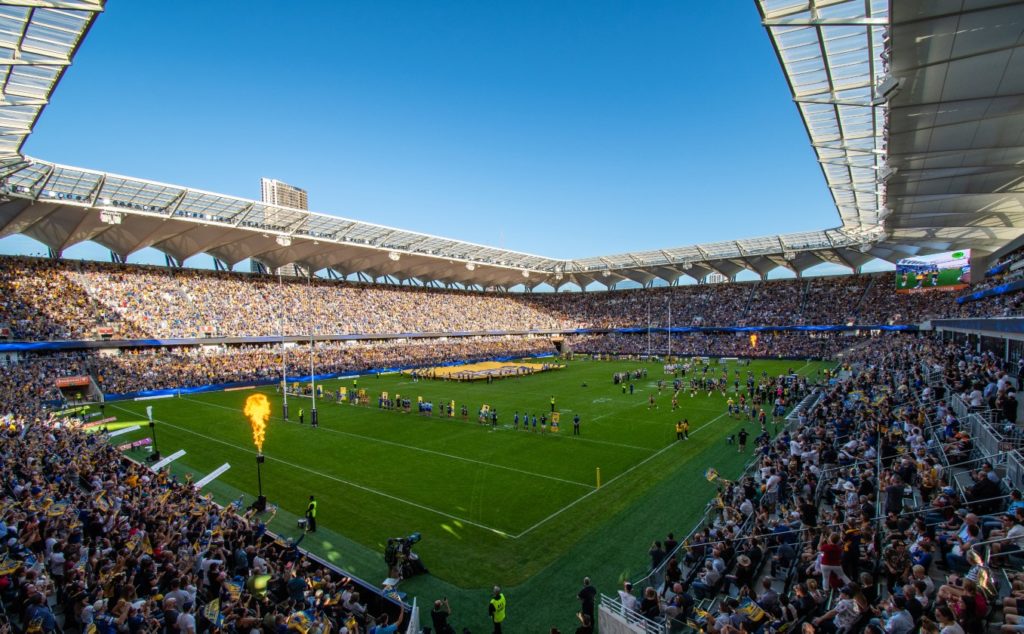
Independent economic analysis conducted for the local city council showed that Bankwest Stadium brings a financial benefit of nearly $1 million to Parramatta each time an event is held at the stadium.
Most recently Populous has been working on the master plan for Christchurch Arena, which is a multipurpose venue, not just for the local rugby team, the Crusaders, but also for concerts, community events and exhibitions.
“The new site of the arena is within the city and the design will link the venue to the city and the main hospitality area in Christchurch so the city itself becomes a venue, prior to event and at the event and after an event.
“Stadiums are about entertainment and about city making and it’s really important to get them right so they can be sustainable in the long term and become genuine assets for their community,” Paterson explains.
Defining Atmosphere
You only get great atmospheric design by understanding where to facilitate the connection and sense of belonging people feel for places.
In the beating heart of its Brisbane community, the multi-award winning Populous-designed Suncorp Stadium, or ‘The Cauldron’, as it is better known, is the most intimate 50,000 seat rectangular stadium in Australia.
“The cauldron-like shape of the bowl with the configuration as tight as possible, is what gives it atmosphere.
“Spectators are only six meters from the sideline at the closest point.
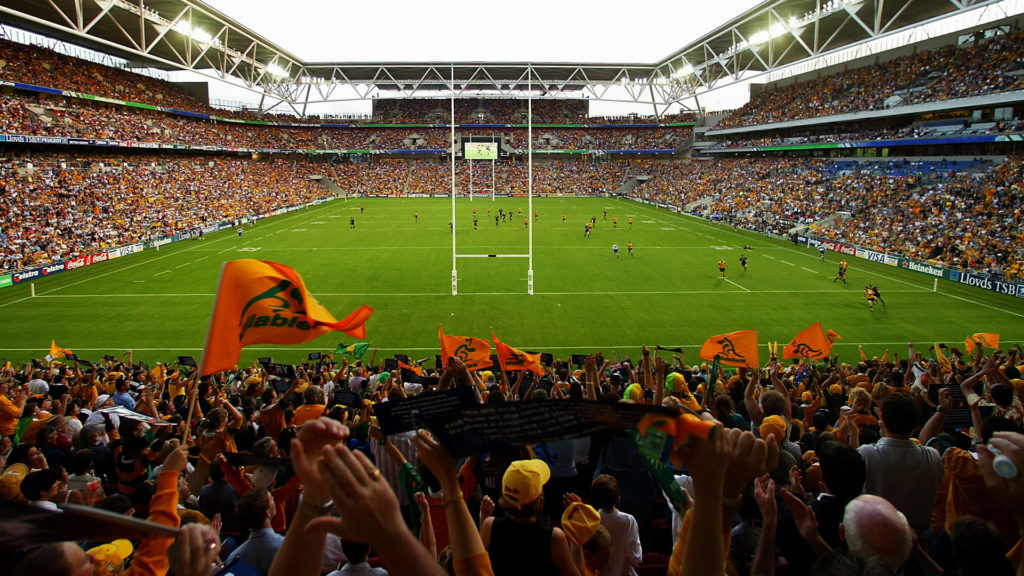
“This close proximity and colosseum design ensures the most intense atmosphere for fans every year,” Paterson explains.
In addition to creating a 21st-century venue for Suncorp Stadium, Populous incorporated innovative design features while integrating the stadium into the city of Brisbane was seen as fundamental to its success; connecting people to their place.
While each Populous project provides a snapshot of that moment in time, together they show how well-designed sports and entertainment venues can be integral elements in placemaking for cities from Hong Kong, to Christchurch and Sydney to Brisbane.
Lorem ipsum dolor sit amet consectetur, adipisicing elit. Non facere corporis et expedita sit nam amet aut necessitatibus at dolore enim quis impedit eius libero, harum tempore laboriosam dolor cumque.
Lorem, ipsum dolor sit amet consectetur adipisicing elit. Illo temporibus vero veritatis eveniet, placeat dolorem sunt at provident tenetur omnis, dicta exercitationem. Expedita quod aspernatur molestias eum? Totam, incidunt quos.